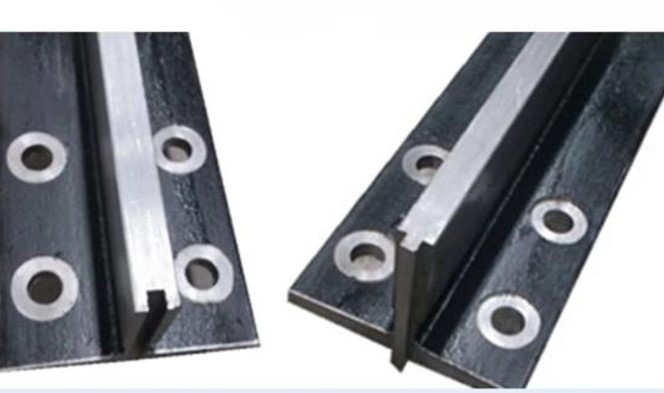Guide Rail Difference 16 mm Between 10 mm
Theme of difference | 10mm Guiderail | 16mm Guiderail |
| Size | Thinner and more lightweight and flexible. | Thicker compared to 10mm guiderail, providing more stability and strength. |
| Material | Typically made of durable materials but may not be as strong as the 16mm option. | Likely made of stronger materials to support heavier loads. |
| Weight Capacity | Better suited for lighter loads compared to the 16mm guide rail. | Supports heavier loads due to its thicker construction. |
| Stability and Durability | May not be as stable or durable as the thicker guide rail, better for lighter applications. | Offers better stability and durability over time, suitable for heavy-duty applications. |
| Cost | Generally, more cost-effective compared to the 16mm option. | Likely to be more expensive due to the additional material and manufacturing costs. |
| Application Suitability | Suitable for lifts with lighter loads or less intense usage requirements. | Ideal for lifts that need to support heavy loads or frequent usage for added safety and longevity. |
| installation and Maintenance | Easier to install due to its lighter weight but might require more frequent maintenance. | May require more effort to install due to its weight and size, but could have lower maintenance needs. |
In summary, the choice between a 16mm and a 10mm guide rail for a lift should consider factors such as weight capacity,
stability, durability, cost, application suitability, and maintenance
requirements. Consulting with professionals in the industry can help in making
an informed decision based on the specific needs of the lift system.
**Weight Capacity of 16mm Guiderail: **
The weight capacity of a 16mm guide rail for lifts is typically higher compared to thinner options like the 10mm guide rail. The increased thickness of the 16mm guide rail provides enhanced strength and stability, allowing it to support heavier loads with ease.
Here are some key points regarding the weight capacity of a 16mm guide rail:
1. **Heavy-Duty Support**: The robust construction of the 16mm guide rail makes it suitable for heavy-duty applications where substantial weight needs to be lifted or supported. This can include industrial lifts, elevators in high-rise buildings, or other systems requiring the transportation of heavy loads.
2. **Safe Working Load (SWL)**: The weight capacity of the 16mm guide rail is typically designed to meet specific safety standards and requirements. Manufacturers provide guidelines regarding the maximum weight that can be safely supported by the guideline to ensure proper functionality and safety of the lift system.
3. **Material Strength**: The materials used in the manufacturing of the 16mm guide rail are chosen for their high tensile strength and durability, ensuring that the guide rail can withstand the stress and pressure exerted by heavy loads without bending or deforming.
4. **Load Distribution**: The design of the 16mm guide rail is optimized to distribute the weight of the load evenly along its length, preventing localized stress points that could compromise the stability of the lift system.
5. **Testing and Certification**: Manufacturers of 16mm guiderails often conduct rigorous testing to determine the exact weight capacity of their products. Certifications and compliance with industry standards ensure that the guiderail meets performance requirements for supporting heavy loads safely.
6. **Customization Options**: Depending on the specific requirements of the lift system, manufacturers may offer customization options for the 16mm guiderail to tailor the weight capacity to the intended application. This could involve modifications in the material composition, profile design, or additional reinforcements to meet higher load demands.
7. **Maintenance Considerations**: Proper maintenance and inspection of the 16mm guiderail are essential to ensure continued safe operation and optimal performance under heavy loads. Regular checks for wear and tear, lubrication of moving parts, and proactive repairs can help extend the lifespan and reliability of the guiderail.
Overall, the weight capacity of a 16mm guiderail is one of its key features that make it a preferred choice for lifts requiring robust support for heavy loads. Understanding the weight limitations and capabilities of the guiderail is crucial in selecting the right component for a lift system that prioritizes safety, efficiency, and durability in handling substantial weights.

 }})
